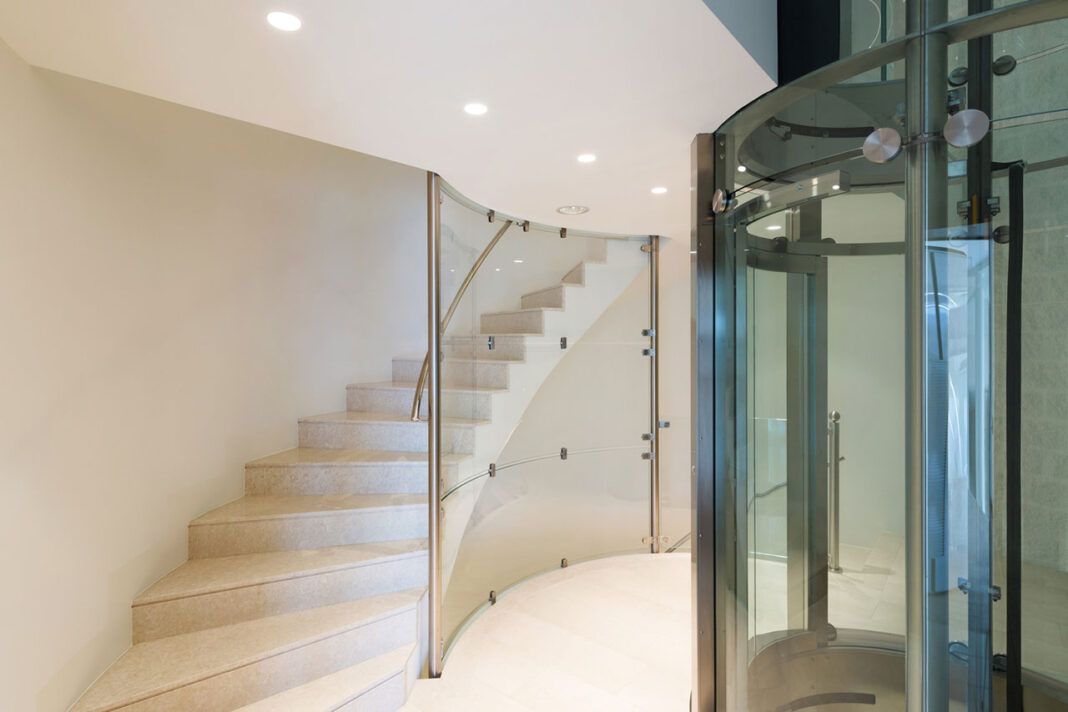Like commercial buildings, elevators can be installed in multi-story residences to make accessing different rooms easier. Such elevators are especially helpful for seniors who cannot use the stairs or even other family members recovering from an illness. That said, installing a lift in the house is time-consuming and requires a hefty investment. So, one must research well before going ahead with the decision in order to get their money’s worth.
Benefits of home lifts
Residential or home elevators are ideal for residences with three or more stories. Installing them can provide several benefits.
- Home lifts are usually easier to install as they do not require a built-in shaft. This reduces the need for extensive structural changes to the property.
- Injuries sustained while climbing or getting down the stairs are quite common. Elevators reduce the risk of such accidents, improving the safety of those residing in the house.
- Residential elevators increase the property value. Data shows that at the time of resale, homes with elevators sell faster than those that do not have this facility.
- A homeowner can customize the design and material of the lift to merge with the existing décor.
- Home lifts can help seniors and people with mobility restrictions access other rooms of the house. They can also provide easy access to stretchers and wheelchairs.
Parts of a home elevator
Traditional home lifts usually have a few key components that help them function.
Machine room
The machine room holds all the important components like cables, control boxes, and drum motors. That being said, some elevator mechanisms do not require a machine room.
Hoistway
A hoistway comprises the pit (located under the lowest floor), shaft (the space where the elevator moves up and down), and overhead (the top part of the elevator that is flush with the ceiling).
Elevator car
This is the enclosed cabin where users can stand as the lift moves up or down.
Support structures
Rails, cables, and counterweights that secure the elevator are called support structures. They may differ based on the type and mechanism of an elevator.
These days, many homeowners consider shaftless elevators, which do not have a hoistway or a shaft. They have a partial enclosure and move-along rails attached to a wall. Also, the drive gear is fixed to the top of the elevator. This gear is operated by a winding drum system, with steel ropes attached, which raise and lower the lift. Shaftless elevators are ideal for compact and small homes.
Dimensions of residential elevators
While considering a home lift, one should consider its dimensions.
Cab size
When choosing a cab, it is important to ensure accessibility to wheelchairs. The cab should also be able to accommodate stretchers during an emergency. Most residential elevator cabs have a few standard dimensions.
- 36” width x 48” depth
- 40” width x 48” depth
- 44” width x 54” depth
- 44” width x 60” depth
Shaft dimension
An elevator shaft is the enclosure through which the lift moves vertically between multiple floors. The shaft can be built within the house’s interior or fixed on the exterior if the space is not enough. One should install the shaft while taking all necessary safety precautions to ensure it is safe for continuous and regular use. The shaft pit is typically around 4 feet deep, and the shaft length can be up to 50 feet, which is ideal for four floors.
Load capacity
Traditional home elevators can carry between 750 and 1,000 pounds, while shaftless elevators can carry up to 550 pounds.
Types of home elevators
Most house lifts can be categorized as traditional or through-the-floor home lifts.
Traditional elevators
These are enclosed and can be covered to look like a closet. Traditional elevators can be made with multiple drive systems.
Through-the-floor
The floors are cut, and the lift passes through without needing an enclosure. Through-the-floor lifts are less expensive as they do need a hoistway.
Types of drive systems
One can choose from many home elevators based on their drive system.
Hydraulic
These elevators are the most common, consisting of a pump and motor that enable ascent and descent. They do not need a machine room. They are built with high-quality material and are safe and easy to install.
Pneumatic
These lifts look good as they have a glass finish and operate under vacuum pressure. Since they do not require lubricants or oil, they are easy to maintain and operate.
Counterweight
These elevators use heavy weights and pulleys to operate the cab. When the cab is lifted, the weight comes down, and when the cab comes down, the weight goes up. Counterweight elevators do not need a separate machine room and are ideal for smaller spaces.
Tips for choosing small residential elevators
A few tips can help one choose the right elevator for their home.
- Calculate the available space and choose an elevator of the right size.
- Ensure it can accommodate a wheelchair or a stretcher.
- Calculate the house restructuring cost.
- Prioritize durability, as stronger elevators do not require frequent maintenance.
Residential elevator prices
The cost can depend on multiple factors, like the type of elevator, type of drive system, size, number of floors, and the cost of customization. One can find home elevators in the range of $35,000 to $1,00,000. A traditional elevator starts at $50,000, while through-the-floor cut elevators cost between $35,000 and $50,000. The cost of demolition, renovation, or construction will be additional. Some companies may include installation costs varying between $5,000 and $15,000.
